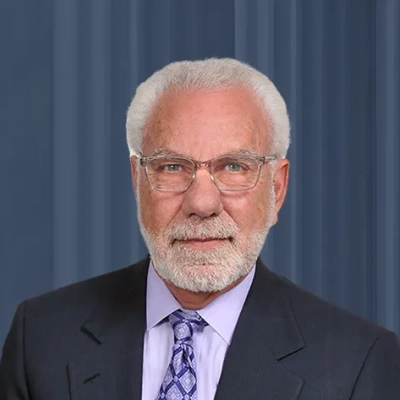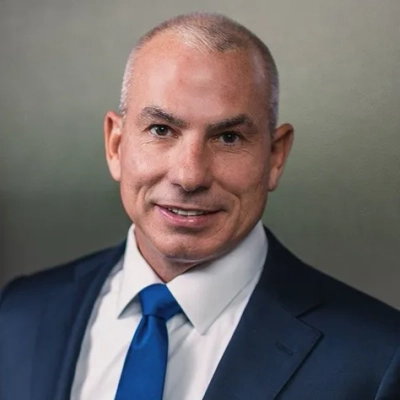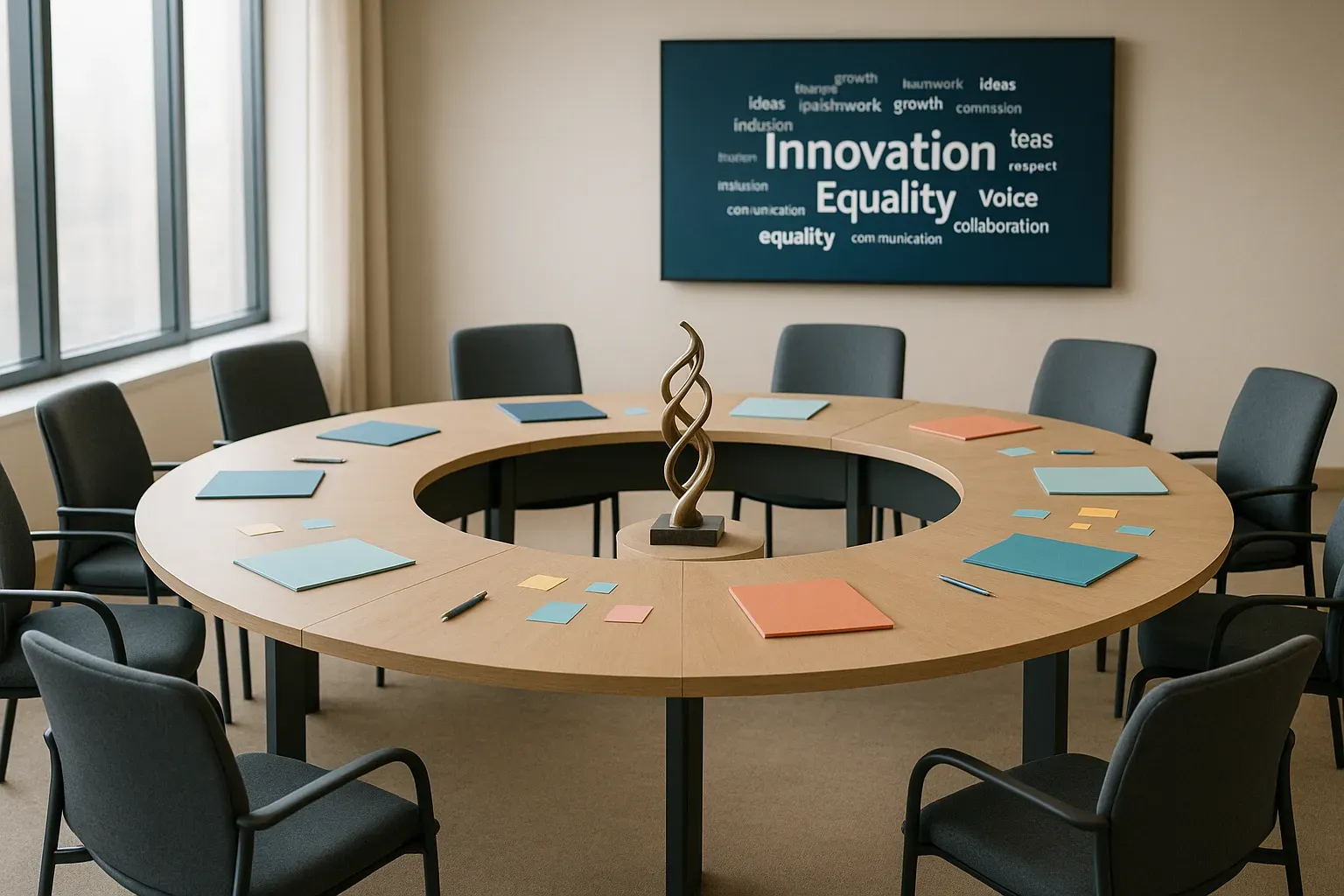Fostering open dialogue remains a critical challenge for today’s organizations seeking to create truly inclusive workplaces, according to industry experts. This article presents fourteen practical strategies that can transform company culture and empower employees at all levels to share their ideas freely. From modeling vulnerability to implementing anonymous feedback systems, these evidence-based approaches help organizations build environments where diverse perspectives are not just welcomed but actively encouraged.
- Model Vulnerability to Normalize Open Dialogue
- Create Public Idea Guardianship
- Design Culture Where Feedback Becomes Routine
- Assign Devil’s Advocate Role Formally
- Leaders Must Demonstrate Rewarded Vulnerability
- Pair Junior Staff With Senior Leaders
- Share Both Wins and Failures
- Use Anonymity to Increase Honest Feedback
- Zero Tolerance for Idea Shaming
- Practice Active Listening at Every Level
- Build Trust Through Transparency and Feedback
- Prove That Employee Ideas Matter
- Offer Multiple Channels for Sharing Ideas
- Foster Collaborative Relationships Across All Levels
Model Vulnerability to Normalize Open Dialogue
One effective strategy I use is normalizing open dialogue by modeling vulnerability as a leader. In team meetings, I intentionally share my own learning moments, ask for feedback on my decisions, and highlight times when I do not have all the answers. This sets the tone that contributions are valued over hierarchy and that it is safe to speak up.
I also create structured opportunities for every voice to be heard. For example, during brainstorming sessions, we use anonymous digital tools where employees can submit ideas without fear of judgment. Afterward, I make sure to acknowledge contributions publicly and, whenever possible, show how suggestions influence decisions.
This combination of modeling openness and building intentional systems has significantly increased participation and innovation. Employees feel their perspectives matter, which strengthens trust and fosters a culture where everyone, regardless of background or title, has a seat at the table.

Create Public Idea Guardianship
Creating an environment where people feel safe to speak up starts with compassion and courage. Compassion means I listen to and honor the intent behind each idea. Courage means that I set the tone by being transparent, even when it means sharing ideas that are still in an early development phase.
One strategy that I have found powerful is creating public ‘idea guardianship.’ When someone voices a perspective in a meeting, I don’t let it get dismissed or lost in the noise of hierarchy. Instead, I make sure that it gets carried forward by the original innovator. To maintain momentum and faith in the concept, I surface it in senior forums, connecting it to strategic priorities, and pair it with the resources required to test it.
Over time, employees see through actions that their contributions are nurtured and given a true vote of confidence. That builds a culture of trust where every voice matters and unique ideas propel the business forward.

Design Culture Where Feedback Becomes Routine
What’s the cost of silence in your organization? For many CEOs, it’s the best ideas that never surface because employees don’t feel safe to speak up. Silence today becomes stagnation tomorrow. The leaders who will thrive are those who create a culture where feedback is routine.
Creating an environment where employees feel comfortable sharing their ideas isn’t about policies or personality, it’s about culture. Often, leaders assume saying “my door is always open” is enough. In reality, openness without structure rarely builds trust. To unlock the full potential of a team, leaders must intentionally design a culture of dialogue built on feedback loops, trust, and the understanding that learning matters more than perfection.
It starts with the leader. Culture is shaped by the daily behaviors employees observe. When a CEO shares lessons learned, including mistakes, they send a powerful message: failure is not final, it’s a First Attempt In Learning. I’ve seen firsthand how admitting a misstep or saying, “I don’t have all the answers,” builds credibility instead of eroding it.
The real cost of silence is the ideas that never surface. Great leaders model a culture where feedback is safe and failure is part of learning.
Leaders who build for tomorrow don’t stop at modeling; they reinforce it with structure. Regular feedback circles, blind idea reviews, or structured listening sessions ensure input is collected, discussed, and visibly tied to next steps. The most important step is showing employees how their voices shaped action.
For this culture to last, it must extend beyond the corner office. A CEO’s modeling sets the tone, but the culture solidifies when every manager and supervisor practices the same behaviors: asking questions without judgment, sharing their own lessons learned, and embedding feedback in daily work. Over time, dialogue becomes routine, trust becomes a norm in the organization.
Teams in cultures of trust and dialogue take smarter risks, innovate faster, and retain top talent. Ideas that once stayed hidden for fear become the fuel that drive future growth.
A question for today’s CEOs is this: Are you modeling the culture you want your people to carry into the future? The organizations that will win tomorrow are those where feedback is continuous, trust is visible, and learning from mistakes is the norm.

Assign Devil’s Advocate Role Formally
In the legal world, a single overlooked detail can be the difference between justice for a family and a lifetime of hardship. To ensure we see every angle, I’ve learned that a leader must intentionally dismantle the fear of speaking up. The most critical insights can come from the newest paralegal, not just the seasoned partners. A work environment that values truth over hierarchy is not a luxury. It’s a strategic necessity for winning in the courtroom and, more importantly, for our clients.
One effective strategy is to formally assign the role of devil’s advocate. Before you and your team commit to a legal argument, turn to a junior attorney or paralegal and explicitly task them with trying to tear it apart. Their job is not to agree but to find every weakness and articulate the strongest possible counterargument from the defense’s perspective. This simple act does two crucial things: it removes the personal risk of challenging a senior attorney’s idea. Second, it invariably makes our case strategy stronger by forcing us to stress-test it internally. It sends a clear message to every person in the room: your voice is a critical weapon in our fight for justice, and I expect you to use it.

Leaders Must Demonstrate Rewarded Vulnerability
Cultivate psychological safety. This means fostering a climate of rewarded vulnerability where people feel they won’t be punished or humiliated for admitting mistakes, asking questions, or offering new ideas. A practical strategy is for a leader to actively and consistently model vulnerability themselves. By openly admitting when you don’t have all the answers, sharing your own mistakes and the lessons learned from them, and genuinely asking for input from every team member, you demonstrate that it is safe to take a risk and speak up. This breaks down the fear of looking incompetent and shows the team that you value their diverse perspectives and contributions, regardless of their role or tenure. It’s a powerful way to build the trust necessary for a truly collaborative and innovative culture.

Pair Junior Staff With Senior Leaders
In my entire professional journey, I’ve learned that good culture starts from the top management. If leaders themselves openly share their own mistakes, challenges, and ideas with the team, employees will automatically feel comfortable doing the same. During team meetings, I share my own stories when my own ideas failed, or when I learned from others’ input. The team only speaks when they feel they are heard and their suggestions are making a real impact. That’s why we pair junior employees with senior leaders for regular check-ins, where they share thoughts in a safe, guided environment. I personally take part in these sessions, ask questions, and listen without judging team members.
This approach has created a huge impact and helped us develop a comfortable and healthy culture over time. Today, our best ideas come from those team members who used to stay silent in the meetings but now actively contribute.

Share Both Wins and Failures
I have found that our team members feel confident to speak up and share their ideas when they know senior leadership isn’t perfect. Many companies focus on initiatives to drive speaking up/sharing ideas, but if you have to constantly promote it, then it’s not organic. Instead, we have found success in sharing our wins and our failures with all our employees. They need to know that I am not perfect. They need to know not all my ideas are great. It’s important to work with the team to pull together the best solution to an issue – they need to be able to see the value in this, not just hear it preached. I have found that by taking this type of action, transparency from the rest of the teams is a byproduct.

Use Anonymity to Increase Honest Feedback
What surprised me as an employee survey company founder was that anonymity actually creates more accountability. When people can share feedback without worrying about their reputation, they will tell you what’s really going on. Through our platform, I’ve witnessed anonymous surveys help uncover issues that would never come up in regular meetings. This is especially true for Asia, where “saving face” is a big cultural aspect for all parties.
The real change happens when leadership takes anonymous insights and addresses them. Action makes employees feel heard. And the cycle of improvement starts.

Zero Tolerance for Idea Shaming
We have zero tolerance for “idea shaming” at any level of leadership. Dismissive behavior, even if unintentional, can stop valuable ideas from surfacing and ultimately damage business growth. That’s why we’ve made it policy for all ideas to be acknowledged respectfully. Even when an idea isn’t viable, we respond thoughtfully. It’s this kind of respect that keeps innovation alive and ensures employees feel comfortable speaking up and sharing their ideas.

Practice Active Listening at Every Level
At Challenge Sports Club Inc., we firmly believe that fostering an open and inclusive environment is essential not only for our staff but also for our students. One effective strategy we emphasize is creating a culture of active listening. This approach allows every member of our team, regardless of their background or level of seniority, to feel valued and heard.
Active listening starts with leadership. As the owner and head coach, I consistently encourage my team to share their thoughts and ideas. During staff meetings, I make it a point to create a space where everyone can contribute without interruption. I remind my coaches and staff that there are no “small” ideas; each perspective can lead to a significant breakthrough in how we connect with our students or improve our training programs. For instance, last summer, a junior coach suggested implementing a mentorship program between experienced athletes and our beginners. This idea not only strengthened our community but also enhanced the development process for all participants.
Furthermore, we practice regular feedback sessions where employees can openly discuss their experiences and suggestions in a structured yet informal setting. I make it a priority to express gratitude for their input, which reinforces the idea that their voices matter. When staff feels their contributions are appreciated, it fosters a sense of ownership and motivates them to share more freely.
In judo, just as in the workplace, there is a strong emphasis on respect and support. At our club, we cultivate this atmosphere within our training programs, teaching our young athletes the importance of listening to their teammates and learning from one another. This leads to better performance and collaboration within our team, ensuring that ideas flow from the mat to our broader community.
Ultimately, our mission at Challenge Sports Club is to build well-rounded individuals—not just in martial arts but in life. By prioritizing a culture of active listening, we create a foundation where everyone feels empowered to contribute, enhancing our team’s dynamic and ultimately our athletes’ success.

Build Trust Through Transparency and Feedback
One effective strategy for creating an inclusive work environment is building a foundation of trust where team members feel empowered to make decisions and share their perspectives. At our company, we’ve found that maintaining transparency and providing constant feedback creates psychological safety that encourages everyone to contribute, regardless of their position or background. When employees understand how their individual contributions connect to company goals, they become more invested in speaking up with innovative ideas and solutions. This approach has significantly improved collaboration across all levels of our organization.

Prove That Employee Ideas Matter
You have to create an environment where employees know they’ll be heard. If an employee feels as though they won’t be taken seriously or even considered because they are in a lower-level position, they may not feel that it’s even worth it to speak up in the first place. Nobody wants to waste their own time and energy. That’s why creating an environment where employees know they’ll be heard is something that we’ve intentionally worked to build. We not only listen when ideas are pitched, but we implement those ideas whenever we can to prove that employees are heard and that their ideas are valued.

Offer Multiple Channels for Sharing Ideas
One effective strategy is offering multiple channels for employees to share their ideas. I specifically encourage one-on-one meetings or email exchanges as alternatives to group settings, which gives team members who might be hesitant to speak up in larger forums an opportunity to express themselves. This approach acknowledges that people have different communication preferences and comfort levels. By providing these alternative pathways for input, we ensure valuable ideas aren’t lost simply because someone isn’t comfortable sharing in a traditional meeting format.

Foster Collaborative Relationships Across All Levels
We’ve built a workplace culture that is collaborative by nature. It’s a positive place where everyone has worked with everyone else on all kinds of projects, plus we do lots of team bonding which has helped build great relationships. So, our employees know that their words and ideas have a lot of value. They have plenty of listening ears around them, and they know that the company culture they are a part of is a supportive and encouraging one, no matter what their role or level is.


